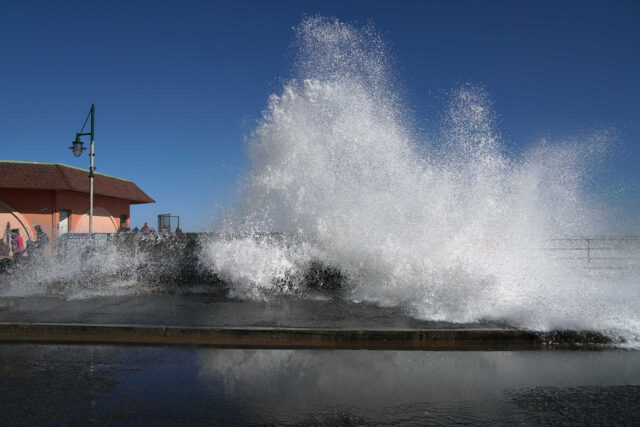California was surprised by heavy coastal flooding back in December, with communities from Ventura northwards experiencing flooding in low-lying shoreline areas. We reached out to sea level rise expert Gary Griggs, a distinguished professor of earth sciences at UC Santa Cruz, to learn more about why that flooding happened—and what it might mean for California’s future.

Why was coastal flooding so bad in December?
In December, sea levels in Monterey and San Francisco were 9 and 13 inches above what’s predicted, respectively, due to El Niño. That may not seem like a lot but on a gently sloping shoreline, that can push water inland by 100 feet. That, combined with very large waves and high tides, pushed water inland along the coast. That’s why several coastal areas flooded.
Depending on how long you’ve lived in California, this may seem like a freaky event. But in fact, what happened in late December was almost identical to what happened in early January 2023 and even back in January 1983: We had really large waves and a very high tide at the same time, and that was exacerbated by El Niño.
What are these floods teaching us?
These floods are a good predictor of where California will experience regular early inundation from sea level rise in the future.
After World War II, California’s population exploded, and we developed cities and neighborhoods on dunes, beaches, and bluffs along the coast. That calm climate period—which had been in place since 1945—switched to a warmer, more energetic pattern with more El Niños in 1978 due to natural long-term fluctuations. All those homes, infrastructure, and roads suddenly had to deal with very different conditions. The number of sea walls and rock revetments—and the amount of damage—went up.
People tend to have short disaster memories, and sea level rise has been moving slowly. Currently, we feel the extreme events like the king tides, but in the long run, sea level rise is going to hit us harder.
Are communities prepared for what’s coming?
By and large most California communities are not prepared. There’s a lot of talk about resilience and sustainability. People can be resilient, but what does it mean when it refers to a coastal community? Is San Mateo County resilient to sea level rise? Is Silicon Valley? I would say they are not.
Each city and county needs to assess its vulnerability to climate change impacts and create an adaptation plan. Most coastal communities are at least thinking about it, and the Coastal Commission has asked them to plan for sea level rise and discuss managed retreat.
But this raises tough questions: How as a community can we agree on what to do? Is it okay when a house gets flooded once a month, or once a week? Do we retreat when the highway is underwater, or the cliff edge is within ten feet of a building?
Most people are not worried about sea level rise, but it’s important to get the public involved so they know what’s coming. We need to make plans as we face more and more difficult decisions.
Is there anything about how sea level rise is unfolding in California that surprises you?
There are no big surprises. We’ve been measuring sea level in San Francisco since 1850, and we can see that sea level rise is accelerating. By 2100, the curves diverge based on greenhouse gas emissions: we could see anywhere from 3–8 feet of sea level rise.
If we were to melt all the ice in glaciers on land outside of Greenland and Antarctica, we’d raise sea level by two feet. If we melt all of Greenland, we’d raise sea level by 20–24 feet. If Antarctica melted, that would raise sea level by 190 feet. Cumulatively, all those bodies of ice would produce about 216 feet of sea level rise.
What’s happening in Antarctica is really complicated: These huge ice sheets are held in place by floating ice shelves. Warmer water is coming in from below and being heated by the atmosphere from above, and the sheets are starting to break off. Glaciers are moving into water more rapidly and that’s the big issue.
Climate change is real. It’s here, it’s everywhere, and humans are the primary drivers. But if we’re still arguing about whether it’s changing, you can’t take the next step. On the positive side, the rate of sea level rise is not that high yet, which gives us time to act—but we’re not doing enough.
The events of last December should light a fire under us. As a teacher, a father, and a grandfather, I feel we always need to have hope and keep moving—but that’s easier with science than with politics. In California, we’ve been fortunate to have some good leaders. Other governments look to what we’re doing, even internationally. If we can make some changes, maybe other localities will follow.






